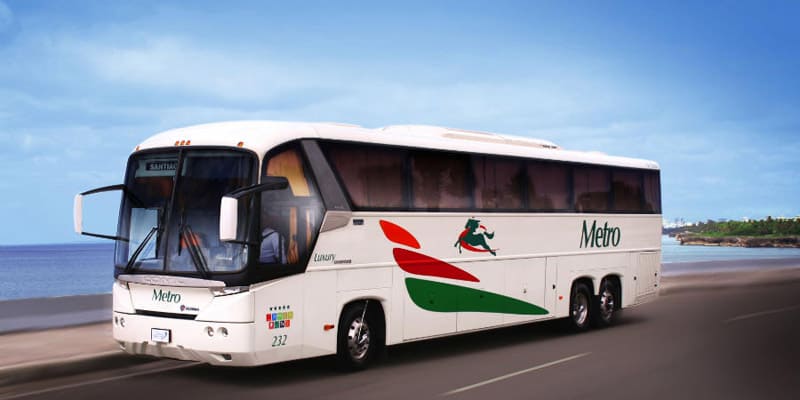[ssboost]
Getting Around
Taxis
There are two popular options for those that would like to travel by taxi: private taxis and hotel taxis.
Private taxis are available twenty-four hours a day in Santo Domingo, Santiago and Puerto Plata. Such taxis can be hailed via telephone, by simply using the Yellow Pages and searching under transportation. Taxi service operators will tell you by phone what the fare is for your trip route, make sure you let the driver know beforehand the fare given to you on the phone to avoid misunderstandings.
However for within the city travel, the fare cost will typically be about RD$150-200 per trip (one way). Dominican taxis do not use fare meters, instead, there are flat rates for each destination. Again please always confirm the rate with your driver prior to departing to your destination. If there is a slight language barrier and to avoid any misunderstanding, see if it is possible to have your driver put the cost of the fare in writing.
[message_box bg=”#d9edf7″] Tip: Be sure to carry change with you to pay the taxi fare. Taxi drivers when paid with large bills (RD$500 and above) will claim they don’t have enough change to give you back and force you to forego some of your change to them. [/message_box]
Hotel taxis are also available at the larger hotels around the clock. Many of these drivers are bilingual and could also double as a tour guide, as they are normally experienced with assisting tourists.
Carros Públicos
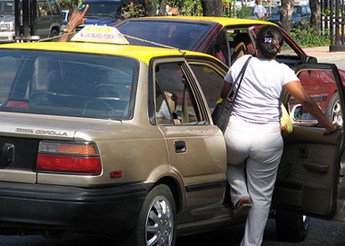
Spanish for “public cars”, found mainly in the larger cities of the Dominican Republic, públicos are regular cars that serve as multi-passenger taxis with a predefined route. Typically, públicos will charge you about RD$25.00 for a short route. If you continue your ride, they will charge you again.
The públicos drivers may place two passengers in the front seat and four in the back, regardless of the size of the car. You have the option to pay two fares to book exclusivity for the front seat or pay four fares and get the back seat for yourself.
This is an inexpensive way to move around large cities such as Santo Domingo and is also a safe mode of transportation. The carros públicos are clearly marked on the outside and all the drivers are supposed to display on a prominent place their union ID on the inside of the car.
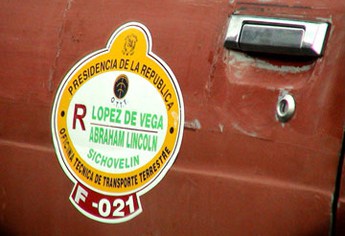
We advise you follow these safety guidelines: Don’t get onboard unmarked vehicles, try not to travel on them late at night and be alert of your surroundings as some passengers may be pickpockets. Don’t flash money and/or jewelry around while inside the car.
If you are traveling during the month of december be advised that pickpockets are after people’s Christmas bonuses so be extra careful during this time of year (this also applies on the 30th of every month which is payday in most places).
“Motoconchos”
Motorcycle taxis are an inexpensive way to get to your destination quickly, but they are also the most risky means of transportation (being a motorcycle with no available helmets for passengers). You can flag down one of these motorcycles (the drivers wear a safety colored vest so you can identify them) along rural roads or in town. They will usually charge around RD$20 per person for short rides but as much as RD$100-150 for longer rides.
If you are ever in the need of transportation and can’t seem to locate any, almost every motorcycle driver will be willing to give you a ride as long as you pay them something when they drop you off (be generous as they just did you a favor). This is a risky situation since you don’t know who this person is but in times of need this tip can of help.
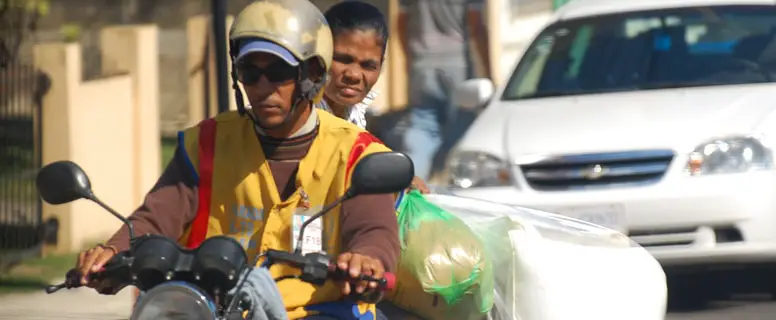
What About Buses?
Large metropolitan transport buses in Santo Domingo and Santiago cover most of the longer city routes for about RD$10.00 to RD$15.00 fares (most transport buses are air conditioned but may get too crowded at times).
Minibuses zip in and out of the city neighborhoods and go from one town to another, essentially for a tenth of the cost of a taxi. Depending on the hour, the drivers may pack in twice as many people as the capacity of the vehicle.
Privately owned bus companies are a very convenient and also cheap way to travel cross country. The Metro and Caribe Tours, both provide coach transportation service between Santo Domingo and other major cities. Metro’s clientele is a bit more upscale because they offer deluxe buses but the majority of dominicans prefer Caribe Tours which provides a great service in quality buses with chilling air conditioner (oh and on longer trips they may even pop in a movie to kill time).
North
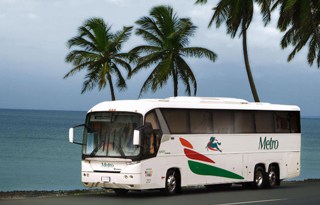
If you’re traveling north both Metro and Caribe Tours provide hourly service from Santo Domingo to Santiago, Puerto Plata, and Sosúa (See schedule for Metro buses). Caribe Tours also runs buses to Las Américas International Airport, Monte Cristi, Samaná and Jarabacoa (See other routes and reserve online).
If you’re traveling to Constanza you can board one of Línea Gladys buses, a small bus line that will get you from Santo Domingo to Constanza and back (if you are in Constanza already they might even pick you up at your hotel if you give them a call).
East
The route to go east (Bávaro – Punta Cana) is exclusive to the SITRABAPU transport union and if you’re traveling from Santo Domingo to Bávaro or Punta Cana you’ll need to board one of their Expreso Bávaro buses. They have two departure points in Santo Domingo: Juan Sánchez Ramírez street (see map) and Parque Enriquillo (Enriquillo Park – see map).
The Expreso Bávaro buses leave Santo Domingo 6 times a day (3 times in the morning and 3 times in the afternoon – click here to see schedules), the entire trip has a duration of about 3 hours and a cost of approximately 10 USD (RD$400). They make stops at the following hotels:
- Barceló complex
- Barceló Dominican Beach
- Ifa Villas Bávaro
- Carabela
- Meliá Caribe Tropical
- Grand Palladium
- Paradisus Palma Real
- Plaza Bávaro
- Now Larimar
- RIU and Iberostar complexes
There are other stops along the route and drivers are flexible once you in Punta Cana to drop you off at any point you request. If you are going to a different Punta Cana hotel than the ones listed above then you should get off at the stop before the last and take one of the taxi cabs available there. These are not the best buses around but the cost is just right and they even play movies that are current (like Terminator II – just kidding!)
Related: How to get from Santo Domingo to Punta Cana on a budget
Other Regions
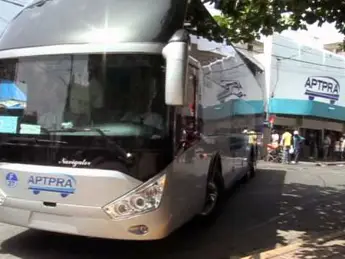
Other cities may be served by express regional bus lines (i.e.Express Bus) that can be boarded at the Enriquillo Park near Duarte Avenue in Santo Domingo. They leave every hour on the hour from 5am to 9pm; there are no phones or offices but rather a ticket counter where you pay your fare (depending on your destination).
If you want to go to La Romana for example you arrive at Enriquillo Park and look for the station, a ticket taker will take your $4 (approx.) just before departure and You will arrive at their bus stop in La Romana about 1¾ hours later.
From there you can take a taxi cab to Casa de Campo or Bayahibe if that’s your final destination.
Bus Companies Contact Information
Metro Bus
- Phone number: (809) 227-0101
- Website: metroserviciosturisticos.com
- Santo Domingo bus station: Av. Winston Churchill Esq. Francisco Prats Ramirez Piantini (See on Google Maps)
Caribe Tours
- Phone number: (809) 221-4422
- Website: caribetours.com.do
- Santo Domingo bus station: Av. 27 de Febrero Esq. Leopoldo Navarro (See on Google Maps)
Línea Gladys
- Phone number: (809) 565-1223
- Website: N/A
- Santo Domingo bus station: J J Duarte 27 (See Map)
Expreso Bávaro
- Phone number: (809) 682-9670
- Website: expresobavaro.com
- Santo Domingo bus station: C/ Juan Sánchez Ramírez casi esq. Máximo Gómez (See on Google Maps) and Parque Enriquillo (See on Google Maps)
Express Bus
- Santo Domingo bus station: Parque Enriquillo (See on Google Maps)
Renting a Car

Major car rental companies have airport, hotel and city locations. A valid driver’s license and major credit card are required to rent a car for up to ninety days. You must be at least twenty-one years old.
Do not skimp when choosing your rental car service, be sure to take out the extra insurance plan that is available. For example, if you have an accident that dents your car, the insurance will prevent delays or other annoying hassles.
If an accident does occur, all you will have to do is visit the nearest police station and declare the accident. Have the other party accompany you, or just take their name, insurance company, license number, cédula (national ID number) and car registration number (license plate).
Driving in the Dominican Republic (especially in populated cities such as Santo Domingo) can be stressful. Traffic signs and laws are not widely respected which can lead to accidents, especially if this is your first time driving here. Driving on the highway is pretty much the same as driving in a major U.S. highway except here in DR roads are not well signed and you may need to ask for directions somewhere along the road.
Driving is on the right hand side and the speed limit is 60 kph (40 mph) in the cities and up to 100 kph (60 mph) on the highways, unless otherwise indicated. Driving around the DR is quite easy, as there is a network of highways that branch out from Santo Domingo, which is the capital. Roads inside towns and cities may not be in perfect condition, so watch for large pot holes and over-sized speed bumps.
Renting a car is a good way to get out and see the country. Some travelers choose to arrive at an airport in one city (i.e. Santo Domingo), rent car there, drive cross country to their final destination (i.e. Punta Cana) where they booked their flight to depart from. This is an interesting way to get to know more of the country, not just the inside of your resort. See the Different international airports in DR.

Popular Routes – Driving Time
- Santo Domingo-Puerto Plata: 3.5 hours
- Santo Domingo-Santiago: 1.5 hours
- Santo Domingo-Jarabacoa: 1.5 hours
- Santo Domingo-Constanza: 2 hours
- Santo Domingo-Boca Chica: 0.5 hours
- Santo Domingo-Juan Dolio: 40 minutes
- Santo Domingo-Bayahibe: 2 hours
- Santo Domingo-La Romana: 1.5 hours
- Santo Domingo-Punta Cana: 3.5 hours
- Santo Domingo-Samana: 4 hours or 2 hours on a toll road
- Puerto Plata-Samana: 3.5 hours
- Santo Domingo-Barahona: 3 hours
*The above times are approximates.
Domestic Air Travel
There is service to major tourist destinations from Las Americas International Airport in Santo Domingo and other major airports. For the different airports in the country visit our Ports of Entry section.
Underground Metro
This method of transportation is limited to the metropolitan area of Santo Domingo. With limited range this option is not yet optimal for public transportation.
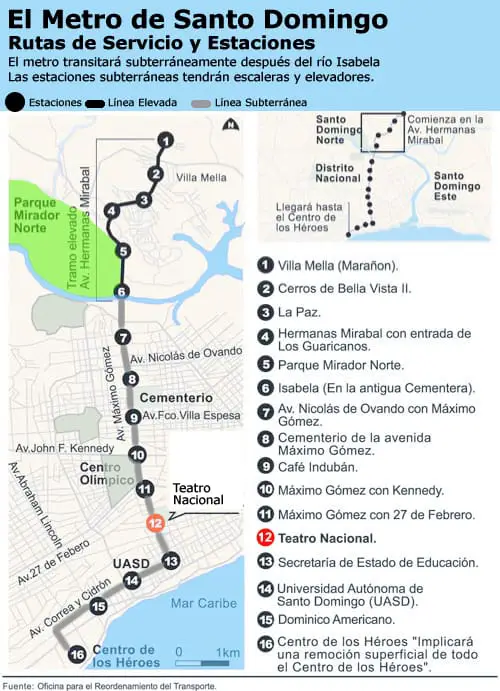
[gap height=”15px”]
[ssboost]

